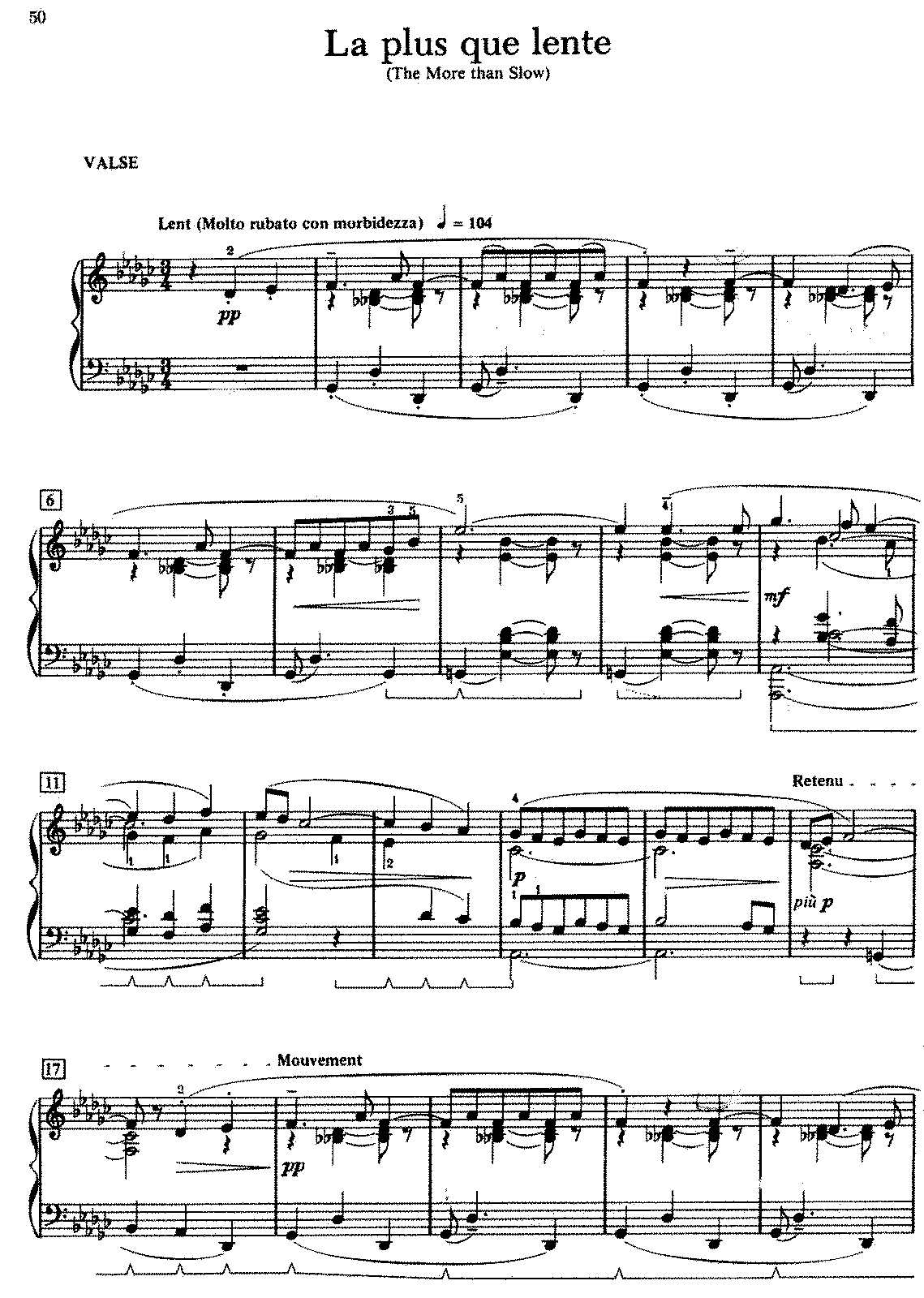

I've added a small amount of fingering to the score to assist in tricky areas, but I wanted to keep the whole piece as close to the original as possible It is 9 pages long- 5 min 30. I've also taken a lot of quaver octaves out but left the necessary ones in to add to the power of the appassionato section- I've left other octaves in, where the music is less demanding, and I've also divided some areas into both hands which are difficult for one hand. Most important of all, it is in the key of G major as a key signature of one sharp is more readable than the original of 6 flats. A popular tune of the time was “La valse lente” (The Slow Waltz), to which Debussy’s musical riposte was “La plus que lente” (More than Slow), a gentle, sophisticated send-up of the sentimental waltz, marked “Molto rubato con morbidezza.I have arranged this this timeless classic for piano in a number of ways to make it manageable. In 1910 Debussy revisited the world of café music. Debussy titled it simply “Danse” when it was republished in 1893 Ravel orchestrated it in 1925. The main dance returns for a breathless dash to the big finish expected of a café display piece. It plays knowingly with the rhythmic ambiguities of the genre, the tension between 6/8 and 3/4 meters, twice dancing nimbly to a huge climax, before tapering off into a more lyrical central section in which the tensions are more harmonic than rhythmic. Romantic composers, including Chopin and Liszt, explored the dramatic and virtuoso side of the dance, establishing a tradition to which Debussy’s Styrian Tarantella belongs. The tarantella is a folk dance from southern Italy, taking its name from the town of Taranto (it had nothing to do originally with the tarantula and the agitated dance supposed to exorcize the spider’s venom). His influences at that time ranged from Wagner – he went to Bayreuth in 18 – to the Asian music and theater he experienced at the Universal Exposition in 1889.ĭance was always an important element in Debussy’s creative work, and in 1890, the year he met Mallarmé and began to think about the theatrical treatment of the poem L’après-midi d’un faune, Debussy wrote a “Tarantelle styrienne” for piano. After the two years in Rome that the prize brought him, Debussy returned to Paris, and continued his education and burgeoning career in the café proving grounds.

There Debussy was more successful, winning the Prix de Rome in 1884 – his second try – with the cantata L’enfant prodigue. Like Ravel, Debussy failed at the Conservatoire as an incipient piano virtuoso, and like Ravel he returned as a composition student.


 0 kommentar(er)
0 kommentar(er)
